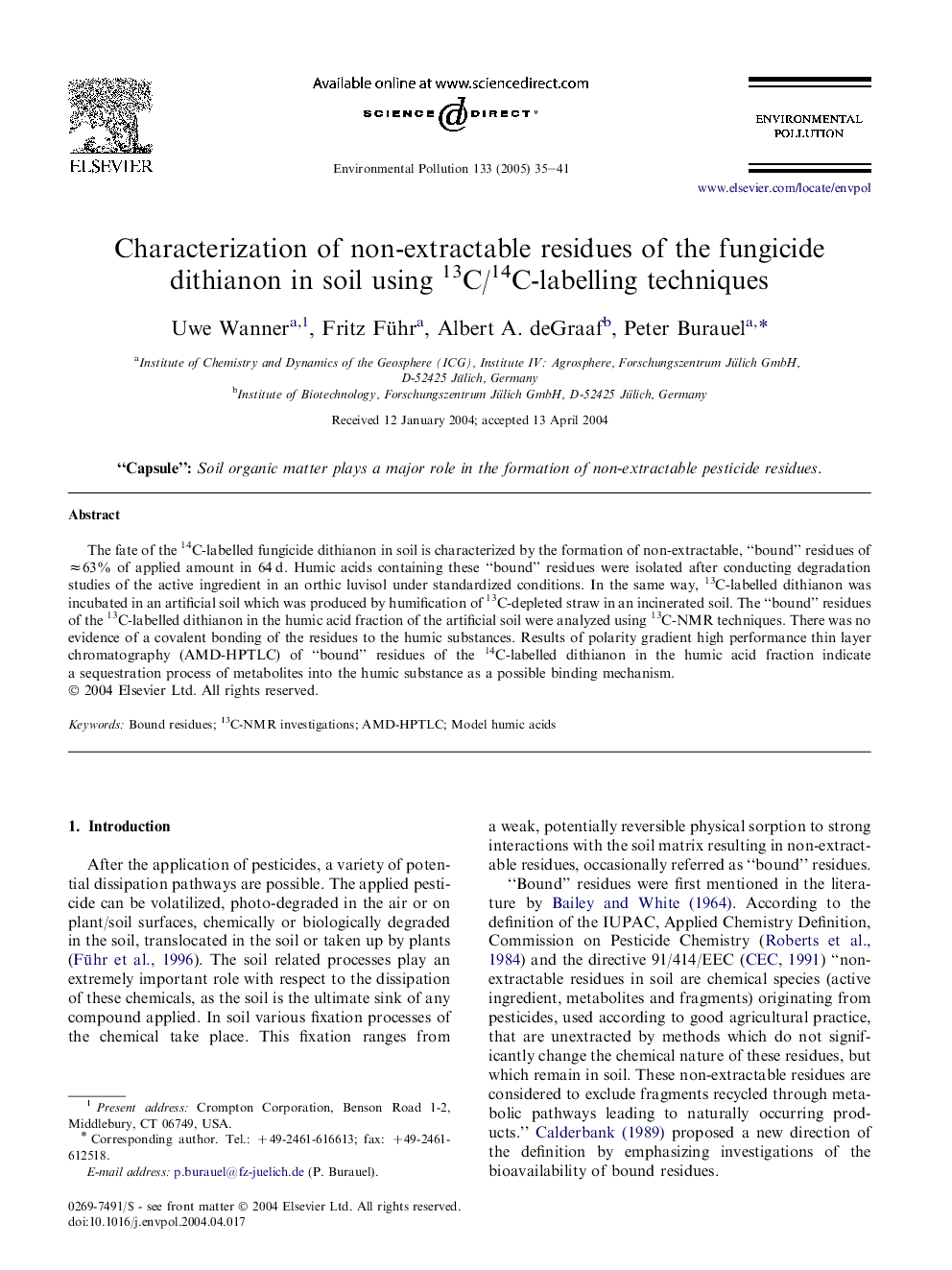| Article ID | Journal | Published Year | Pages | File Type |
|---|---|---|---|---|
| 9456515 | Environmental Pollution | 2005 | 7 Pages |
Abstract
The fate of the 14C-labelled fungicide dithianon in soil is characterized by the formation of non-extractable, “bound” residues of â63% of applied amount in 64Â d. Humic acids containing these “bound” residues were isolated after conducting degradation studies of the active ingredient in an orthic luvisol under standardized conditions. In the same way, 13C-labelled dithianon was incubated in an artificial soil which was produced by humification of 13C-depleted straw in an incinerated soil. The “bound” residues of the 13C-labelled dithianon in the humic acid fraction of the artificial soil were analyzed using 13C-NMR techniques. There was no evidence of a covalent bonding of the residues to the humic substances. Results of polarity gradient high performance thin layer chromatography (AMD-HPTLC) of “bound” residues of the 14C-labelled dithianon in the humic acid fraction indicate a sequestration process of metabolites into the humic substance as a possible binding mechanism.
Keywords
Related Topics
Life Sciences
Environmental Science
Environmental Chemistry
Authors
Uwe Wanner, Fritz Führ, Albert A. deGraaf, Peter Burauel,
